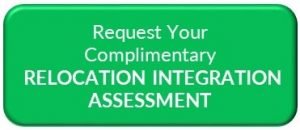Relocation integration helps Human Resource Departments reduce risk while increasing operational efficiencies. Many HR professionals seek greater productivity from their Human Resource Information System (HRIS) and Payroll software programs. HRIS may encompass a number of basic functionalities to allow for HR management including:
- Recruitment
- Talent Acquisition
- Talent Management
- Performance
- Training/Learning
- Employee Development
- Reporting
Companies use HRIS programs to gain a number of benefits. These benefits may include detailed record keeping and support for strategic initiatives. Ultimately, a company’s HRIS is usually in place to increase data accuracy and efficiency.
Relocation Integration: a Winning Strategy
Relocation programs often require employee data to effectively facilitate the relocation process. New hires and transferees may need household goods moves, business travel, expense tracking, temporary housing, and home sale/purchase benefits. The path to greatest efficiency between HRIS, Payroll, and relocation programs is through relocation integration.
Addressing Operational Demands of Relocation and Reducing Company and Employee Risk
The demand for operational HRIS and Payroll efficiency is at an all-time high. There are hundreds of blogs, white papers, and other content produced by Relocation Management Companies (RMCs) describing technology innovation and their capabilities. However, only a few RMCs truly have the capability and resources to provide cloud-based relocation integration solutions that effectively and efficiently help HR and Payroll stakeholders.
Road Map to Relocation Integration
A successful cloud-based relocation integration solution starts with a road map or project plan that supports the accurate and timely transmission of data between the RMC’s operating system and the client company’s HRIS and Payroll software programs. The relocation integration road map should be designed to foster collaborative engagement with stakeholders to execute on 5 key steps. These 5 steps cover the implementation of relocation integration solutions designed around the company’s needs and specific system requirements.
5 Steps to Cloud-Based Relocation Integration
- Project Planning: Participants collaborate and implement goals, objectives, milestones, and deliverables for the project plan.
- Integration Design: Stakeholders establish FTP and/or API integration types, establish data elements for transmission, parameters, and business rules.
- Configuration: Programmers begin configuration development for data conversion.
- Integration Testing: User training and data transmission testing begins.
- Project Completion: Launch with ongoing monitoring and management.
A proven relocation integration process for data transmissions will provide the company’s relocation program with a number of significant benefits:
- Measurable process efficiencies
- Reduced human error due to data entry, duplications, typos
- Data insights and analytics
- Increased compliance confidence
- Improved year-end process
- Accuracy guarantees no need for W-2 C (corrected wage and tax statements)
What Should Employers do?
Employers looking to increase the efficiency of their HRIS and Payroll software programs with a relocation integration should work with an experienced and knowledgeable Relocation Management Company (RMC). RMCs with proven cloud-based technology solutions will help HR and Payroll stakeholders achieve greater effectiveness and significant efficiencies.
Conclusion
GMS’ team of corporate relocation experts has helped many of our clients determine how to achieve greater program efficiencies and productivity with relocation integration. Our team can help your company understand how to follow the 5 steps to cloud-based relocation integration following a collaborative approach with all stakeholders.
GMS was the first relocation company to register as a “.com.” The company also created the first online interactive tools and calculators, and revolutionized the entire relocation industry. GMS continues to set the industry pace as the pioneer in innovation and technology solutions with its proprietary MyRelocation® technology platform.
Learn best practices from Global Mobility Solutions, the relocation industry and technology experts who are dedicated to keeping you informed and connected. Contact our experts online to learn more about how your company can achieve operational efficiencies and productivity through relocation integration, or give us a call at 800.617.1904 or 480.922.0700 today.



